Trial by Fire
THE STORY OF OREGON’S 2020 VINTAGE
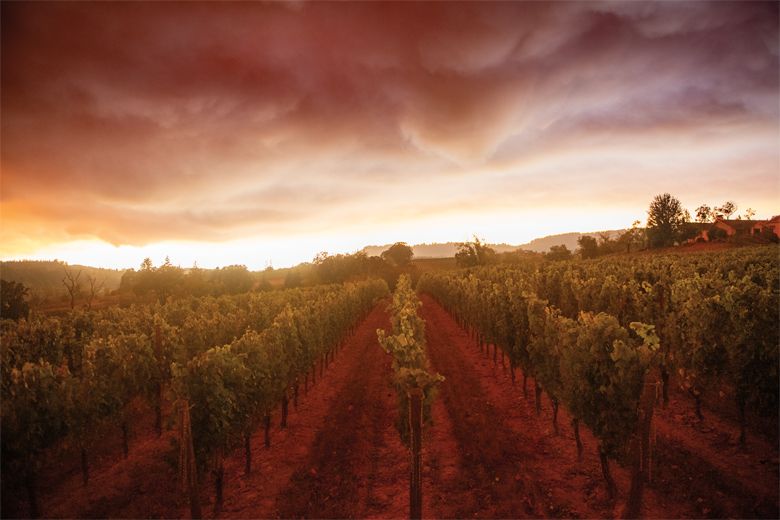
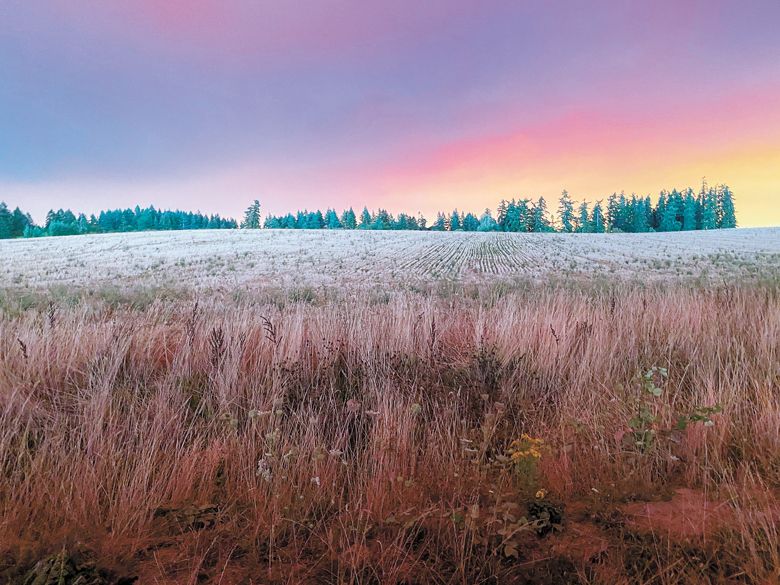
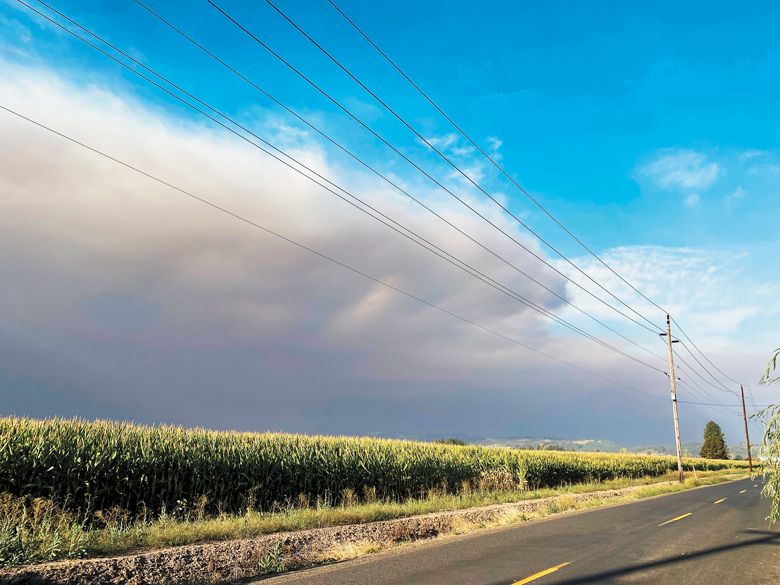
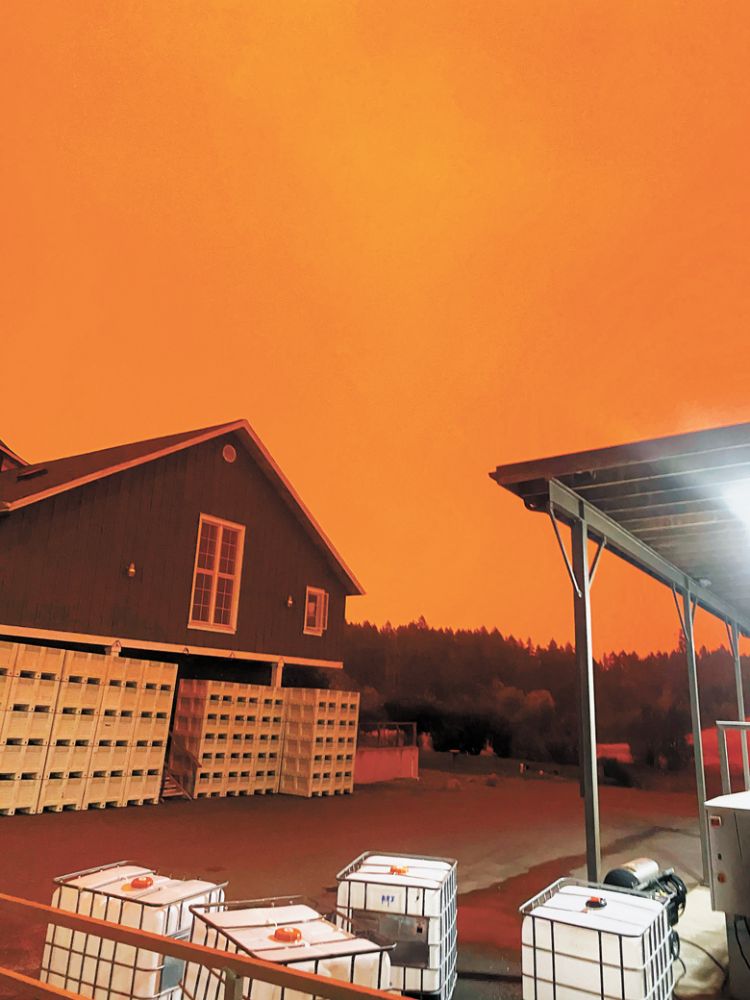
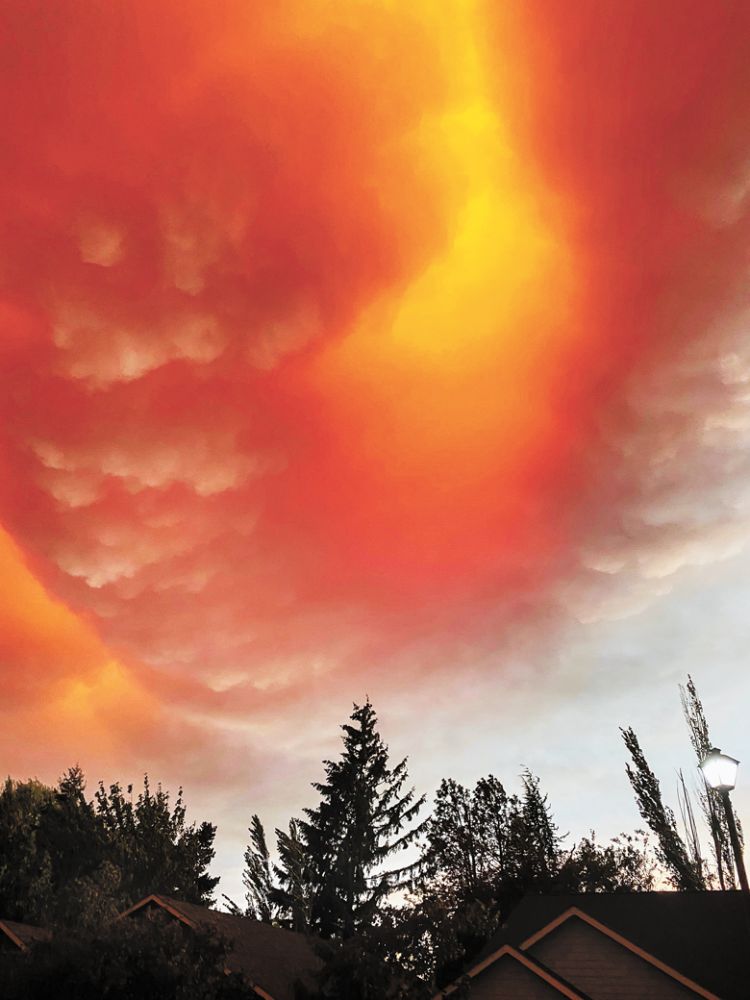
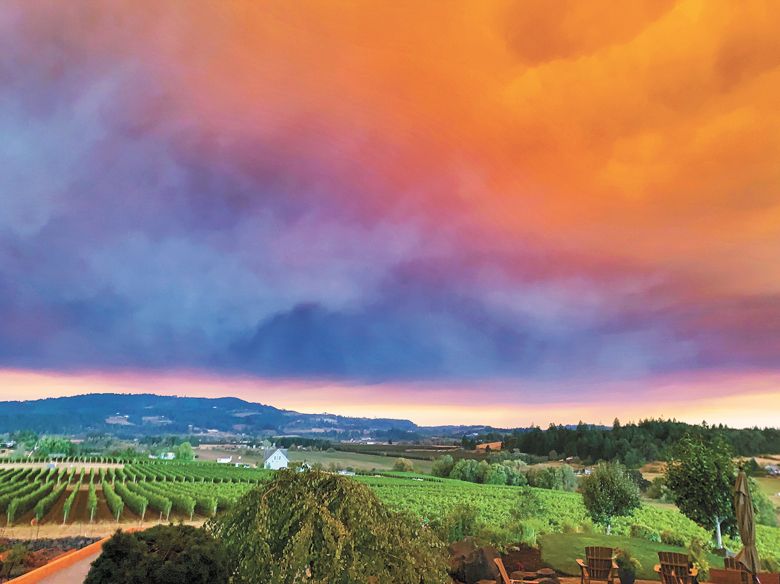
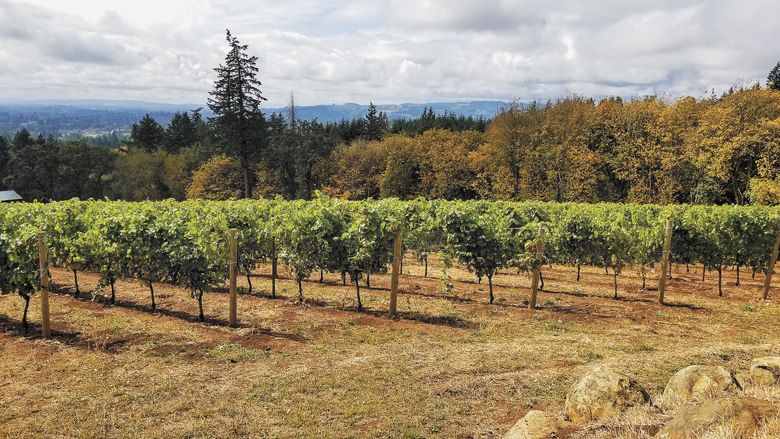
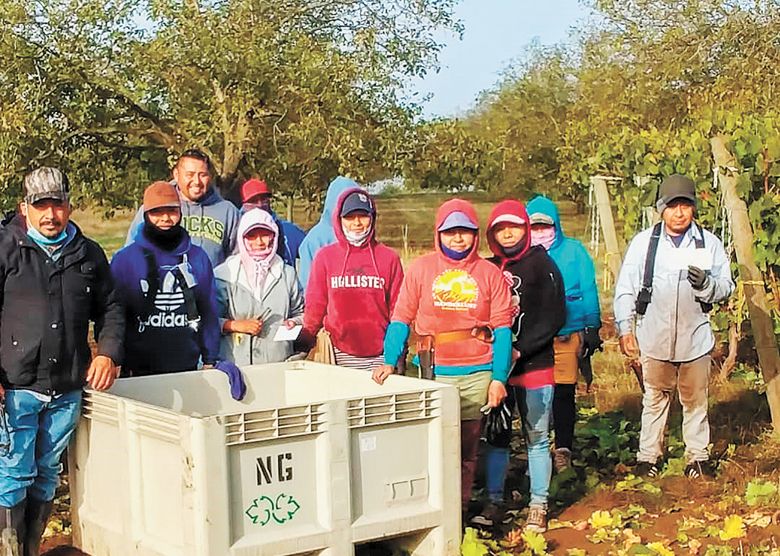
By Michele Francisco
Obviously, 2020 was a rough year. Few anticipated a pandemic– one with herculean strength that would effectively put the entire world into a giant choke-hold. Strong enough to disrupt at a global level, COVID-19 affected everyone’s lives as it leaped from person to person, killing millions.
Closures in the spring, intended to slow the spread of the virus, erased significant sources of revenue for Oregon businesses and wineries. However, as the pandemic raged, grapevines thrived in Oregon’s vineyards. As harvest neared, winemakers around the state breathed a collective sigh of relief, anticipating a straightforward one filled with beautiful fruit. But, as is often the case, bad things tend to visit in threes.
Just as summer was concluding, a historic– rather catastrophic– weather event over the Labor Day holiday weekend created ideal conditions for fires to spark all over the state. Extremely low levels of humidity, a lack of measurable precipitation and unusually warm temperatures combined with strong, hot winds– lead to five colossal mega-fires plus a dozen smaller ones, each under 50,000 acres. The smoke generated resulted in created hazardous air quality over the entire Northwest. The thick smoke was clearly visible in NASA’s satellite photos from space.
Within a matter of days, wildfires killed nine people and burned 6,000 homes, businesses and structures, reducing them to rubble– along with the towns of Phoenix and Talent, including Simple Machine Winery.
While certainly devastating, the headlines and stories portrayed by the news unquestionably had a “chicken little, the sky is falling” sensationalism about them… as if every square acre of land in Oregon had burned, leaving skeletal trees and scorched earth in the fires’ wake. Eerie images of red-orange, Martian skies took over news and social media.
Smoke blanketed the state as fires quickly burned over a million acres. A few were fortunate. Warmer sites were fully picked mere days before the fires began and smoke inundated much of the Willamette Valley.
Belle Colline Vineyard in the Chehalem Mountains had harvested nearly all fruit by Sept. 8. Owned by Anacréon Winery’s Kipp and Danell Myers, who acknowledge how lucky they were that year. “In general, the 2020 growing season was lovely. Before the late wildfires, we enjoyed a season of few extremes. Our Belle Colline Vineyard is a very warm, low-elevation site. Historically, we are one of the first to pick in the Valley and that held true in 2020. We were fortunate to have harvested all of our fruit before the smoke rolled in,” shares Danell Myers.
However, most wine grapes throughout Oregon, not fully ripe, still clung to the vines when the smoke settled into our wine regions. Vineyard owners, managers and winemakers scrambled for information.
Until recently, wildfires were uncommon during the growing season. Nonetheless, climate change has introduced a new normal. As the planet warms, Oregon’s grapes are ripening earlier than ever, especially apparent in the last decade. And warmer summers create conditions from which fires can spark and rapidly grow, stretching the resources of firefighting battalions.
Smoke can, and does, affect wine grapes, especially during and after véraison. Factors including the duration of smoke exposure, the proximity of wine grapes to the fire, and the type and age of the smoke are all currently being researched. We know that chemical compounds called volatile phenols produce smokiness in wine, after penetrating the grape skins and binding to sugar molecules. Not until after that sugar is converted to alcohol does the smoke become apparent in a wine. It’s important to note that while smoke can impact wine grapes, the effects do not carry over to subsequent years unless, of course, more wildfires ignite.
Because wildfires during Oregon’s grape growing season are a relatively recent phenomenon, our state looked for help from experts in California and Australia.
“When the smoke arrived,” recalls Janie Brooks Heuck, Managing Director of Brooks Winery, “I reached out to California winemakers and growers who also had property in the Willamette Valley and heard it was very substantial. I also listened intently to the Oregon Wine Board discussions with OSU, learning that our area was considered significantly impacted.”
Dave Specter, winemaker and owner of Bells Up Winery, explains, “I sat in on the webinars offered by the Oregon Wine Board during that time. I appreciate that everyone was trying their best to share whatever information they had about techniques to mitigate smoke impact during fermentations.”
Sheila Nicholas, wine grower for Nicholas Vineyard and Anam Cara Cellars agrees, “Both the Oregon Wine Board and Willamette Valley Wineries Association really came through. Their zoom conferences with colleagues in California were immensely helpful as we waded through uncharted territory.”
As soon as it was safe to work outside, Gabriel Jagle, winemaker at Scenic Valley Farms, says, “We started smoke mitigation efforts in the vineyard, primarily extra leaf pulling to improve airflow around the grapes. It’s a technique usually used for rain, but it’s also helpful for smoke.”
Nicholas Vineyard, located north of Newberg, was well-situated when the smoke rolled into the area. Explains Nicholas, “Our vineyard sits at an elevation of about 600 feet, in a wind tunnel above Highway 99W between Rex Hill and Parrett Mountain. This keeps us slightly cooler in the summer and dryer in the winter.
We’re also shielded by Parrett Mountain to the east; fortuitously for us, the Bald Peak fire was to our west. Our elevation, combined with the direction of the smoke, proved to be tremendously helpful; although we did experience delayed ripening, due to the lack of sunlight.”
Because volatile phenols can’t be tasted in fresh grapes, becoming apparent only after fermentation, lab analysis is crucial to detect the compound. Suddenly, labs from British Columbia to California were overwhelmed with grape samples. Processing constraints meant those desperate for answers could expect them in two months… too late to aid in picking decisions that needed to be made much sooner.
King Estate took immediate action as the smoke began to dissipate. COO and winemaker Brent Stone sources fruit from vineyards as far north as Forest Grove and as far south as the Rogue Valley. He knew it was imperative to move quickly. Over three days, samples were collected and sent to labs, before the sudden influx of requests began overwhelming these businesses.
“We collected a representative grape sample from over 40 vineyards for third-party lab testing, small-scale fermentations, and sensory evaluations,” Stone recalls. “The sensory analysis alone resulted in 1620 data points across all tasters and tasting intervals. We referred to this as our ‘harvest before harvest.’ With this risk assessment, we attempted to determine the level of smoke impact at each site. Ultimately, all this data guided our decisionmaking process for the 2020 harvest.
Wineries with limited budgets were forced to become creative with available resources. Bells Up owner Specter explains, “My primary takeaways from the Oregon Wine Board webinars were that any labs that could test for smoke impact were significantly backlogged as well as cost-prohibitive for small producers like us. We took the recommendations to obsessively sniff and taste throughout ferments and barrel time with every intention of dumping anything that we deemed offensive.”
Scenic Valley’s Jagle shares, “We harvested our fruit by hand to prevent rupturing the skins before fermentation. Our vineyard is in the central-eastern part of the Willamette Valley which contributed to our level of smoke impact. Those farther west and north were less affected, while vineyards to our east had more exposure.”
Many wineries and vineyards made the heart-wrenching decision not to pick any fruit. Imagine caring for grapevines all season– nurturing and coaxing them to develop the best grapes possible– with the harvest finish line in sight before it’s suddenly obscured by a thick cloud of smoke. This tragic scenario played out all over Oregon. Brooks Winery is one example of many choosing to leave what they assumed to be smoke-tainted grapes, in the vineyard.
Heuck describes how she dealt with the situation faced by Brooks. “The question became, how do I ask my winemaking team to make high-quality wines with various levels of compromised fruit? Our team adheres to biodynamic winemaking principles in the cellar, so utilizing recommended smoke-mitigating protocols is not something they are used to doing.”
She continues, “We and a few of our growers had crop insurance, but most did not. I made the call not to pick early, allowing time for many to find new buyers for their grapes. However, we wanted to take care of our growers, so Brooks agreed to pay them to maintain our relationships going forward. The winery started the Grower Relief Fund whereby we contributed money from each wine purchase from previous vintages. Our community supported us, buying enough wine to help Brooks pay our growers.”
Some vineyards found wineries willing to purchase fruit rejected by others. Specter explains, “My wife Sara began searching to replace grapes that had been too heavily impacted by smoke. She reached out to Craig Keeler, who didn’t have any grapes available. But, two days later, he suggested she get in touch with Tim Ramey at Zenith Vineyard. A small block of Wädenswil was available after a previous contract had been canceled.”
Says Specter, “The fruit was stunning. Zenith is a highly sought-after vineyard; one we would never have the opportunity to buy from in a normal year. We were absolutely delighted to get it and wound up using all the fruit, combined with five percent of our estate Pommard, to make the 2020 Candide Reserve Pinot Noir.”
Before the wildfires began, King Estate anticipated far higher volumes of harvested fruit. Stone explains, “You plan harvest many months in advance from staffing, equipment, consumables, etc. All of this planning is based on assumed yields. While you expect some variance– you don’t ever expect to lose 90 percent of your crop. That loss resulted in significant overspending in many areas. As a winery, you are always more efficient when your tanks are full.”
While striving to minimize the effects of smoke from the 2020 vintage, Oregon winemakers simultaneously experimented with numerous techniques in their cellars.
Jagle explains how he handled smoke-impacted fruit once it was in the winery. “We used a variety of techniques, including some natural winemaking strategies: more whole-cluster, shorter skin contact time as well as aging the wine in a higher percentage of new Oregon oak barrels. By utilizing technical winemaking techniques, including a higher percentage of commercial yeasts, charcoal fining and various degrees of filtration, I found ways of reducing the smoky presence. We even dumped the wine from our smokiest vineyard in the East Willamette Valley. These different strategies helped minimize the smoke impact, but nothing made it disappear completely.”
Stone adds, “We had some experience working with smoke-impacted fruit from previous vintages in Southern Oregon. Based on that experience, we had a general understanding of how smoke exposure could impact grape quality and what levels could be managed via the winemaking process.”
Brooks’ Heuck recalls, “At the same time, some vineyards asked us to take their fruit and attempt to make wine. This proved to be a good experience for our production team, offering them an opportunity to utilize new protocols and see what they could do. The end result– none of the wine met our quality standards, so we sold it off in bulk.”
Several Oregon winemakers tried experimental equipment, including something called the SRX machine, which uses a resin filter to help remove smoke. Jagle jokes, “I like to call it the magical smoke-be-gone machine. We wanted to minimize the smoke impact, but our goal never was to make it disappear completely. To do so would require stripping the wine of all its character and leave us with a generic red wine.”
Scenic Valley Farms chose to several trials, all to learn more about the impact of smoke in wine. Jagle treated one wine four different ways: charcoal fined; SRX machine, both and neither. “We set aside a case of each and will taste these wines again over the next few years to better prepare ourselves for future smoke events,” explains Jagle.
With fingers crossed, some hoped their unique vineyard locations suffered less smoke, choosing to stay the course. Nicholas explains her decision to follow plans developed long before the fires began. “Cluster yields were low across the vineyard. Because my husband Nick and I expected enough fruit for just 320 cases of Pinot Noir, we decided early on to make one cuvée– and skip a reserve Pinot and rosé. But choosing not to harvest was never considered an option– we had fruit contracts to fulfill and no second incomes to fall back on.”
As the saying goes, “fortune favors the brave.” Those critical decisions made by the Nicholas’ were recognized by the expert panel of Oregon Wine Competition judges, including one Master of Wine, two Master Sommeliers and three wine journalists, who awarded Anam Cara’s 2020 Pinot Noir a double gold medal.
It’s interesting to consider an estimated 25 percent of the population is unable to detect smoke impact in wine, lacking the necessary saliva chemistry that reacts to volatile phenols. However, that leaves 75 percent who can– in varying degrees from barely perceivable to extremely sensitive.
When asked how confident she was about submitting her 2020 Anam Cara Pinot noir to wine competitions, Nicholas replies, “I felt it was necessary to obtain credible, third-party endorsements. Not only does winning awards help sales but also tells us how our wine stands in comparison to others. Entering wine competitions seemed like the logical option: win a bronze or lower and no one would know. Win a silver or better and we can use it to promote our wine,” explains Nicholas. “We selected three large competitions: The San Francisco Chronicle, East Meets West, and the Oregon Wine Competition. Our wine medaled in all three. We then used these awards in a very successful case sale campaign.”
Tom Danowski, president of the Oregon Wine Board, understands the tension between fueling near-term business growth and enhancing a brand’s long-term image. He relates, “Those who chose to make wines in 2020 did so only after careful consideration and an extensive evaluation process. For decades, Oregon growers and winemakers have focused relentlessly on exceptional quality and brand integrity. Those interlocking obsessions have made Oregon one of the most-esteemed winegrowing regions on the planet. In fact, it’s primarily our reputation for extraordinary wines that has elevated the state to such an envied global market position, capable of attracting winemaking talent, investment capital and critical acclaim.” Danowski continues, “Vintners making wine from 2020 grapes did so if they were confident that those bottlings would further enhance the state’s prestige and strengthen their brands.”
Can some level of smoke impact actually enhance a wine? Jagle believes it can. “Smoke is like any other component in wine. Whether it’s oak, fruit, volatile acidity, Brettanomyces, acid or sugar, my winemaking philosophy remains the same. Too much will ruin a wine, but a little bit can make it more interesting. The key is making sure the smoke doesn’t dominate the wine.”
“In my opinion, smoke is an aspect of the terroir found in the 2020 vintage,” continues Jagle. “It instantly transports you back to the time and place where the grapes were grown. For those less experienced with wine, the concept of terroir can sound esoteric, even to the point of nonsense. But, in these wines, it is undeniable.”
“Widely recognized expert critics, including James Suckling who tasted hundreds of the wines here last spring, are awarding historically impressive scores to the 2020s. For example, the Bergström 2020 Dundee Hills Chardonnay, rated 97 points. Similarly, 15 out of 43 Oregon wines reviewed in Wine Spectator’s March 2022 Oregon report were rated 90+, or one in three Oregon wines reviewed,” adds Danowski. It’s important to note, that of the wines awarded 90 or more points, six were Pinot noirs from the 2020 vintage.
How are visitors to Bells Up reacting to the vintage? Specter shares, “The reality is that smoke is part of the story of the vintage. Were our three Pinot Noirs from this region impacted? Yes, but for almost all our guests, the smoke is minimal. The flavors and enjoyability of the wines are not impaired. However, we don’t suggest laying our 2020 Pinots down for the long run.”
“When practical, we encourage people to ‘try before you buy’,” continues Specter. “The vintage is truly beautiful and our wines have received positive feedback from professional reviewers and customers alike. We’re really happy with how they turned out.”
After some trial and error, Anam Cara Cellars also found success selling their 2020 Pinot Noir. Describes Nicholas, “It took a while to finesse our tasting room presentation. When pouring our 2020 before older vintages, consumers would inevitably dismiss it and move to the next wine. We decided to reverse the tasting lineup, instead ending our wine flight with the 2020.” Nicholas explains, “By that time, guests had tasted our other Pinots and, suddenly, the smoke-exposed wine got a great reception.”
From a winemaker’s perspective, Stone reflects on the 2020 harvest with some anguish. “Considering the amount of effort that went into every decision and the gravity of those choices, it was certainly one of the state’s more challenging harvests. At King Estate, we somewhat begrudgingly refer to it as the most stress per ton in winery history – especially when you consider how little wine was actually made in the end.”
Jagle speaks quite candidly when sharing his thoughts on the wine he produced. “This was probably the most difficult wine I’ve ever made– by far the most maligned– but I’m immensely proud of it,” says Jagle. “It tells a story that needs to be told. People seek out unique wines that have something to say. Wine is so much more than just fermented grape juice. This vintage tells a vital story about our region, industry and the world we live in. I don’t think we should be hiding, but rather, embracing it.”









